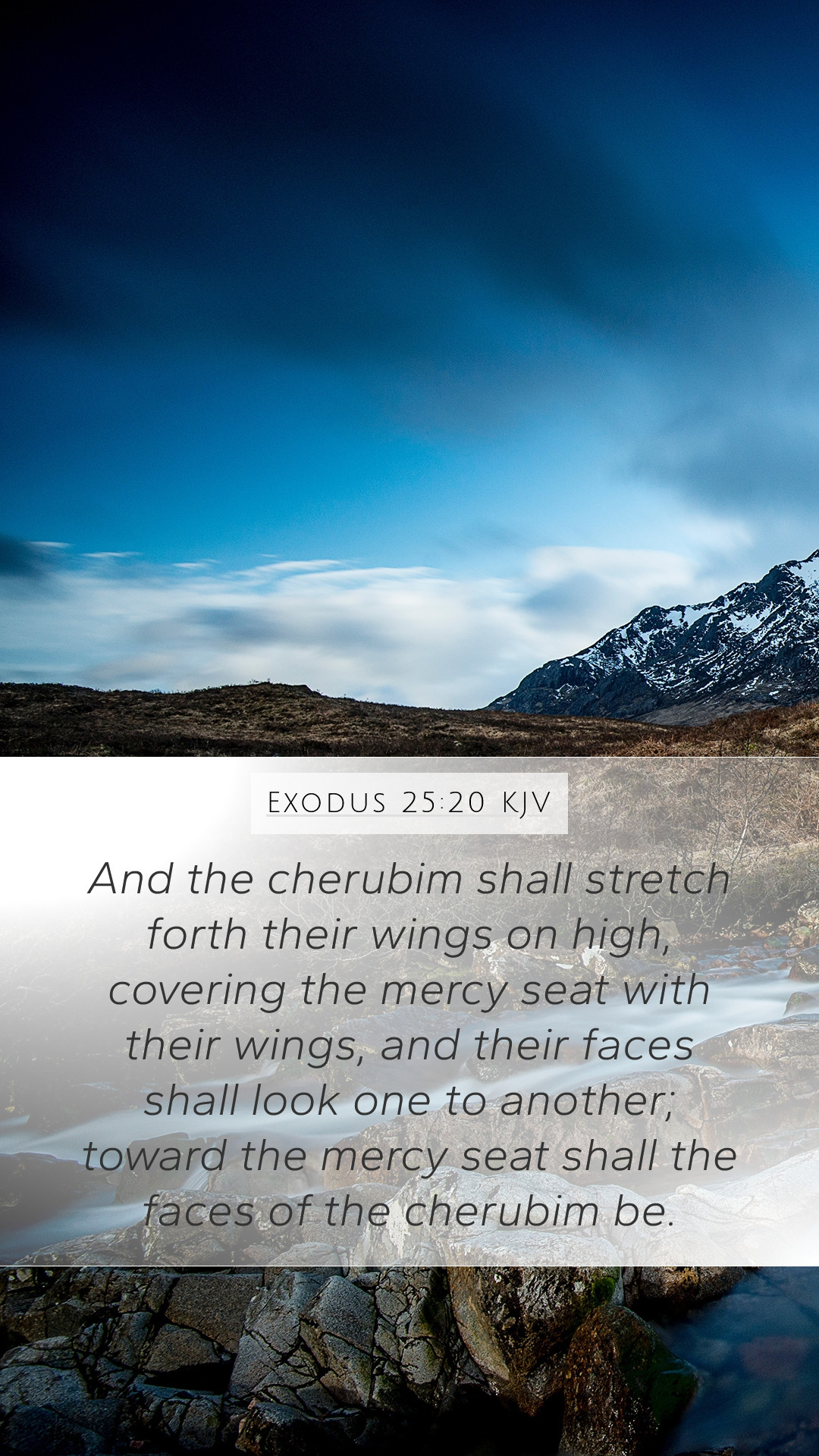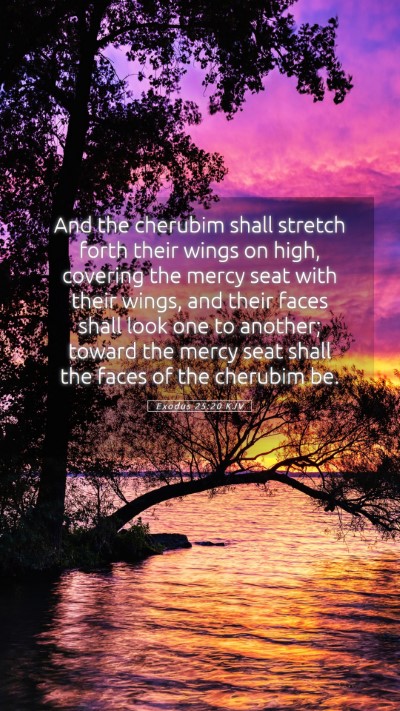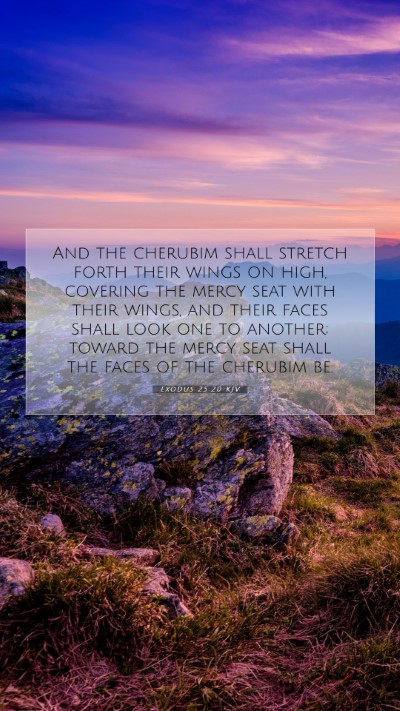Exodus 25:20 - Understanding the Verse
Bible Verse: Exodus 25:20
“And the cherubims shall stretch forth their wings on high, covering the mercy seat with their wings, and their faces shall look one to another; toward the mercy seat shall the faces of the cherubims be.”
Meaning of Exodus 25:20
This verse describes the design of the mercy seat on the Ark of the Covenant, emphasizing the significance of the cherubim that are to be placed on it. The cherubim symbolize God's presence and their posture signifies the reverence and holiness of the divine experience.
Bible Verse Commentary
-
Matthew Henry's Commentary:
Henry highlights the importance of the mercy seat as a place of atonement. The two cherubim, with their wings spread over the mercy seat, represent the divine protection and glory of God. They look toward one another, indicating unity in worship and the sacredness of the presence of the Lord, reflecting that God’s glory dwells among His people.
-
Albert Barnes' Notes:
Barnes notes that the cherubim signify the angels surrounding the throne of God. Their arrangement also conveys the connection between heaven and earth, as they look into the mercy seat, which is seen as a symbol of God’s grace. This emphasizes the theme of divine communion and the requirement of holiness when approaching God.
-
Adam Clarke's Commentary:
Clarke expounds on the symbolism of the mercy seat being covered by the wings of the cherubim. He interprets this as God's protection and the sacredness of the atonement process. The cherubim's faces gazing toward the mercy seat express a profound reverence and the necessity for divine mediation in human affairs.
Biblical Exegesis and Insights
The cherubim figure prominently in biblical symbolism. The act of stretching their wings over the mercy seat can be seen as a form of worship and honor to God, signifying that their purpose is intimately linked to God's presence and the atonement of sins.
Significance in the Context of the Pentateuch
This verse is part of the instructions given to Moses regarding the construction of the Tabernacle, which served as a dwelling place for God's presence among the Israelites. The mercy seat, as the cover of the Ark of the Covenant, was pivotal for the sacrificial system established under the Mosaic Law.
Application in Daily Life
The symbolism of the mercy seat and cherubim can be applied in our personal lives by recognizing the importance of approaching God with reverence and the understanding that His mercy is granted through Christ, our mediator.
Bible Study Insights
For those involved in bible study groups, this verse serves as a starting point to delve into the nature of God's mercy, angelic beings, and the theological implications of Christ as our mercy seat. Online Bible study tools can further aid individuals in exploring the rich symbolism present in these passages.
Cross References
- Exodus 26:1: Details about the Tabernacle's construction.
- Leviticus 16:2: Instructions regarding the Day of Atonement and the role of the mercy seat.
- Hebrews 9:5: New Testament reference to the mercy seat and its significance in Christian theology.
Conclusion
Understanding Exodus 25:20 provides a deeper insight into the architectural beauty and theological richness of the Old Testament's sacrificial system. By exploring the significance of the cherubim and the mercy seat in both the historical and spiritual contexts, we can better grasp the themes of divine mercy, grace, and the need for atonement in the journey of faith.
This interpretation can serve as a guide for anyone searching for bible verse meanings, bible verse interpretations, and bible verse explanations, allowing for a structured scripture analysis that enhances our bible study insights.


